

How to get a PhD in Architecture
Whether you’re at a crossroad in your professional career as an architect or in the middle of your BArch or MArch with some doubts on whether you want to practice architecture, pursuing a doctoral program in architecture might be an opportunity to still be involved with the world of architecture albeit not by practicing professionally. Pursuing a PhD in Architecture can easily be seen as a career shift since the point of getting a degree in architecture is to become an architect, however, there is another side to architecture that is less concerned with creating buildings and more on research, a route that can be as important and fulfilling. Nowadays, this can come in different forms of non-professional degrees, one of which is a Doctor of Philosophy in Architecture. In this article, I hope to provide some insight to those who are interested in doing research work in architecture.
A Doctor of Philosophy in Architecture is a relatively new addition to doctoral studies when put next to other fields in the humanities and sciences. At least in the United States, PhD’s in Architecture didn’t emerge until the 1970s. For example, Taubman College in Michigan , one of the first to offer a Doctor of Architecture, only started offering the degree in 1969 while Harvard did not introduce its degree until 1987. This delay shouldn’t come as a surprise since practicing architects have always been able to work in academia with a professional degree alone, leading to a discussion of whether the field of architecture even needed to have this degree. In fact, even the first generation who pursued these degrees continued to practice throughout their time in school. The PhD, however, did allow for architects and designers to more directly involve themselves in academia and have an impact there.
Ultimately, offering a non-professional degree in Architecture as high as a PhD birthed other non-professional degrees that we see today in schools. Alongside the MArch and BArch degrees, there are the MS degrees which are non-accredited degrees that provide studies on a specific research topic. For example, several schools around the United States, including USC , UPenn , and GSAPP , offer master's in historic conservation degrees that focus on historic architecture conservation research. Other concentrations include sustainable design, urban design, architectural history, and even real estate development. Although not required for accreditation, it’s a great opportunity for individuals who are passionate about a specific subject in architecture.
A prerequisite to start your PhD is to have a Master of Arts. This is typically already built into the PhD program itself and could take up to two years to complete. The Master of Arts degree is seen as a preparation for a PhD degree. Although built-in, you may still need to apply to enter the PhD degree once completed. Once you do enter, your years pursuing a PhD will depend on your chosen research. In architecture specifically, this can last between four to seven years. A second language (some institutions even require a third) is often a requirement while pursuing a PhD to be able to understand historical documents on a deeper level. The language depends on your chosen research, but typically they must fall within the modern languages.

The Application
Just like applying to your previous degrees, you’ll want to consider location since you’re expecting to be in school for several years. Most importantly, however, it’s vital to really dive into the school, the department where your PhD lies, and the faculty that is part of that department. In this level of academia within architecture, schools can define their architecture differently. Some schools don’t have a sole architecture department but rather, are integrated within another department such as arts and urban planning. Schools that do have an independent architecture department will also typically present specific tracks for studies. MIT for example has a History and Theory of Architecture track along with a History and Theory of Art. At UC Berkeley , they provide a PhD track of Building, Science, Technology, and Sustainability as a collective, also known as BSTS, and a track of History, Theory, and Society as a collective, also known as an HTS.
Furthermore, looking into faculty who are working on the same interest and passion as you are will be an important consideration as they essentially serve as advisors throughout your research. On top of these, you will have to take the GRE (a good amount of schools are waiving this even for PhD applications), an essay talking about what you're interested in researching and why, and recommendations from previous employers, faculty and so forth. PhD applications are typically due by the end of the year, but each school will vary in its specific dates.

Compared to paying a tuition fee in a professional degree such as BArch and MArch, pursuing a PhD relies on funding from grants and scholarship as research work can be seen as work in itself. The initial funding and conditions will vary from each school. The common thread, however, is that becoming a TA or even teaching a full course at the institution is a way to receive money while doing your research. Because PhD’s are primarily seen as a route towards academia (not always exclusively), this will serve as a great opportunity for those who are interested in practicing their skills in teaching. Just like any degree, outside scholarships and grants are opportunities for more funding and typically, this is seen as a way to avoid doing teaching jobs to focus on doing your research and writing a dissertation.
The Dissertation
If you have a BArch or MArch, you might already be familiar with the idea of a thesis. The dissertation is essentially going to be your thesis that you’ll be working on pretty much your whole time in your PhD. A dissertation is the main requirement for you to obtain your Doctor of Philosophy degree, typically a book-length research project which you would defend to a committee. Schools will go about this differently but nonetheless, expect to do a lot of reading and writing within your PhD degree to cultivate your research work.
Job Prospects
A Doctor in Philosophy is the main way to get into academia. There is still a lot of debate on what kind of professionals should be teaching studios and seminars in architecture schools, nonetheless, you will find an array of schools that provide some sort of architectural study to students, lying in different places within the spectrum of the built work and the historical theory work. Another route to consider would be a job at a research institution focusing on the arts and culture such as museums as they can also provide openings due to architecture falling within the humanities. Ultimately, the point of a PhD is to be able to have the space and time for an individual to research a topic which that individual feels passionate about and believes to be an important topic. This specificity can lead towards a more specialized workforce, whether that is in academia, the arts, or even urban planning.
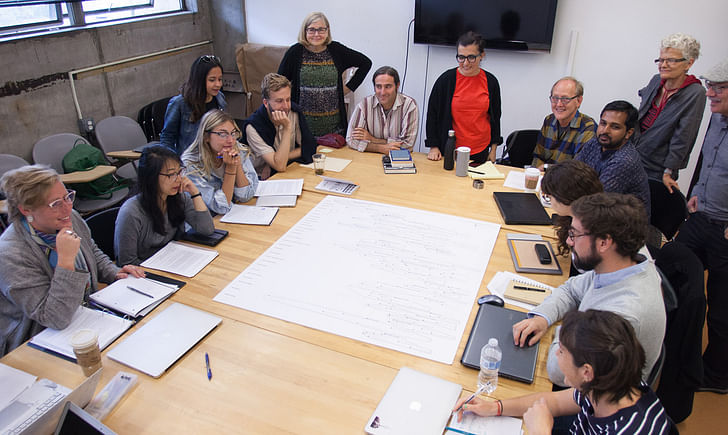
Because architecture is mainly a practicing profession, doing research work can be an anomaly. However, this is not to say that the work cannot have value in the world of architecture. Architecture can live through different mediums — from living in the built environment to existing in a piece of writing. Regardless of which medium you resonate the most with, it’s important to remember that executing your interests and passions can spark and inspire ideas, and architecture should continue cultivating a diverse set of thoughts. So if you have a passion for a certain topic, find ways to cultivate it. Whether it be by building something or writing about it.
Similar articles on Archinect that may interest you...

About the Author
Lance Arevalo

22 Comments
APRIL 6, 2021 | 3:00PM ET / 12:00PM PT
"Expanding the View into Post-Professional Degree Programs"
https://www.acsa-arch.org/webi...
great and awesome idea !
I see more unplayable student loans in someone future. Focus on helping current professionals make more money. Creating more elite intellectuals does not help.
thisisnotmyname
"Typical funding for the doctoral degree includes four years of full funding (tuition fellowship, benefits, and stipend based on a Graduate Student Instructorship or a Graduate Student Research Assistantship) and two additional years of tuition only fellowship (TOF) with benefits, if required. "
I knew a few PHDs from UMich, they didn't have to pay anything. You might be projecting.
phd programs are almost always 100% funded, with a stipend on top.
now, is a phd in architecture a necessary degree? still debatable- i wasn't aware how new this type of degree is in architecture.
It's a jumping off point to get deep into research or academia. People aren't doing this to go do the same thing as all the MArchs and BArchs. With that in mind, I would say it's a great approach if that is your intent.
Nam Henderson
i'm speaking more about the broader philosophical debate about the nature of the degree.. i think prior to the 70's, what was common was an art history phd with a focus in architecture, which i think there is plenty of argument in it being sufficient enough.
A PhD in architecture is great, but only if there are available teaching slots open. Though it goes back to the larger point where architecture expertise should be valued more in media, government, etc. Biden's about to pass a 3 trillion dollar infrastructure bill with no apparent design vision -- just a lot of economist BS. Meanwhile there are no popular critics left, and the few venues left are keen to pretend like the McMansion lady has something interesting to say.
JJArchitect
PhD acronym 'piled high and deep'
DesignGnome
One of the offices I worked at has an office in Honolulu, many of my co-workers there have PHDs in arch
Context is key. University of Hawaii has a professional DArch degree. It is very different than the other Arch PHDs as far as I understand.
Yea, don't do this unless you want to struggle to find a middling academic job. Even if the doctorate is heavily subsidized, this is a complete waste and will no way help you in your architectural business. On top of it, they put the most bizarre, out of touch professors in this sector - or you are learning on you're own / in thesis mode - which you could do without being a PHD student.
Just a reminder to those in college thinking about pursuing this degree path - a PhD in Architecture - if you bypass getting licensed (per NCARB and State Board requirements) to obtain your PhD and take a career path in academia, it is illegal to call yourself an 'Architect' in the U.S. Please don't confuse the two.
I mean, if you just don't get licensed regardless of what you do in academia technically it's illegal... Unless you work in IT ;D Anyway, the two things are entirely unrelated, you can get a PHD and conceivably still get licensed, you could get a MArch and not get licensed. I know there are a lot more unlicensed MArchs out there calling themselves Architects than PHDs calling themselves architects. This seems like a rather non-problem.
My comment was directed more to those in the age bracket I often mentor (high school students and college students) looking to become licensed Architects. Many of them are always looking for the least path of resistance to become licensed Architects - merely providing clarity the article did not address. Designers/people misrepresenting themselves as or doing work as 'Architects' is an issue - Google how state Architecture boards are cracking down on people misrepresenting themselves as 'Architects'. One of the states I'm licensed in issues rulings and legal cases each month the State brought against designers/people working as or misrepresenting themselves as 'Architects'. The cases often end in hefty fines and/or in extreme cases more punitive legal ramifications for the individuals.
Am curious as to how the profession protects the term 'Architect' but doesn't really work to heighten the terms standing in the world. Most clients are happy with a designer, developer, planner or interest to do most of the work, perhaps getting an architect to stamp when necessary. All of this does little for the 'Architect' as it was understood by Frank Lloyd Wright or anyone else.
J D J... That's fair. Getting a doctorate is definitely not least path of resistance though. As for the legal actions. I also see that in the state I am licenced in, but it's almost exclusively for people who have represented themselves as architects for the purpose of performing architectural services. Which, is of course illegal and the main point. However, I have also know hundreds of recent grads and young professionals who refer to themselves as "architectural designers" or something like that, which is illegal and they technically know it.
My favorite is the Honorary Doctorate.
Dr. Sean "P. Diddy" Combs
Dr. Aiec Baldwin
Dr. Robert DeNiro
Dr. Conan O'Brien
Dr. Usain Bolt
Dr. L.L. Cool J
Dr. William Shatner
Odd, nothing in the alphabet letter salad following J Daniels Jenkins name above indicates that he is an architect.
wrong- aia indicates licensure vs assoc aia.
By the way, Harvard began its Ph.D. in Architecture program in the 1900s.
Block this user
Are you sure you want to block this user and hide all related comments throughout the site?
This is your first comment on Archinect. Your comment will be visible once approved.
- Back to Features List... Back to Top ↑
- » Architectural Issues
- » Culture
- » Architects
- » Design
- » Academia
- ↓ More
- » Buildings
- » Business
- » Employment
- » Technology
- » Film/Video/Photography
- » Urban Planning
- » Sustainability
- » Events
- » Landscape
- » Web
- » Competition
- » Furniture
- » View All
- × Search in:
- All of Archinect
- Interesting for you
- My settings
Everything you need to know about studying a PhD in Architecture
Part of arts, design & architecture, what is architecture.
Architecture is the art and science of designing and creating physical structures and spaces. It stands at the intersection of creativity, history, engineering, and social sciences. As a student in Architecture you will learn about shaping the environment to accommodate human needs while merging aesthetics, functionality, and environment.
Architecture Specialisations
A vast domain, Architecture offers many specialisations. Some of the key areas include:
- Urban Design: The art of designing entire cities or town layouts.
- Landscape Architecture: Crafting outdoor spaces, balancing aesthetics and function.
- Sustainable Architecture: Designing with ecological and sustainable principles at the forefront.
- Interior Architecture: Tailoring the interior of a space for optimal aesthetics and functionality.
- Architectural Technology: Integrating modern technology into building designs.
If you are considering a Master’s in Architecture, you will have the opportunity to explore these or other niche areas in-depth. Notably, the most common specialisation in Architecture is Sustainable Architecture, reflecting the growing demand for eco-friendly designs.
What will you learn during an Architecture programme?
Embarking on an Architecture degree will provide you with a rich set of skills and knowledge. You will:
- Understand the history of architectural styles and their cultural significance.
- Master the art of drafting and digital design tools.
- Grasp structural principles and material science.
- Develop a keen eye for aesthetics and space functionality.
Noteworthy courses to expect:
- Architectural History: A journey through the evolution of architectural styles.
- Building Science: Understanding the technicalities of building materials and systems.
- Digital Design: Mastering software tools for architectural designs.
- Structural Mechanics: Grasping the principles of supporting various architectural designs.
- Studio Design: Hands-on design projects to hone your skills.
Architecture is a perfect blend of creativity and practicality. The skills you can get from Architecture courses are versatile, finding applications in various domains like urban planning, real estate, and even digital game design or the movie industry.
Skills required for a degree in Architecture
To excel in Architecture, one should possess creativity, a strong visualisation ability, and an analytical mindset. Good interpersonal skills are vital for understanding client needs and working in teams. For prospective students, the Architecture degree requirements might also include a portfolio showcasing any prior design work.
What can you do with an Architecture degree?
The world of architecture offers many rewarding careers, such as:
- Residential Architect: Designing private homes tailored to client specifications.
- Commercial Architect: Creating structures for business purposes, like offices or malls.
- Conservation Architect: Preserving and restoring historic structures.
- Urban Planner: Shaping the development of towns or cities.
- Interior Designer: Perfecting the inside of spaces for both form and function.
Reflecting on the jobs you can get with an Architecture degree, it's clear that the scope isn't limited to just building design. For those contemplating what you can do after an Architecture degree, remember that this field touches nearly every aspect of our built environment. Given the ever-growing demand for well-designed spaces, especially with the tilt towards sustainable practices, it's no wonder many believe that a career after the most common specialisation in Architecture is well worth the investment.
View all PhDs in Architecture . Keep in mind you can also study an online PhDs in Architecture .
Interesting programmes for you
Best universities for architecture on phdportal.
- Ranking (2018)
| Universities | Location | TopUniversities Ranking (2018) |
|---|---|---|
| Cambridge, United States | 1 | |
| London, United Kingdom | 2 | |
| Delft, Netherlands | 3 | |
| Berkeley, United States | 4 | |
| Zürich, Switzerland | 5 | |
| Cambridge, United States | 7 | |
| Cambridge, United Kingdom | 8 | |
| Singapore, Singapore | 9 | |
| Hong Kong, Hong Kong (SAR) | 10 | |
| Beijing, China | 11 | |
| New York City, United States | 12 | |
| Los Angeles, United States | 13 | |
| Milano, Italy | 14 | |
| Hong Kong, Hong Kong (SAR) | 15 | |
| Sydney, Australia | 15 | |
| Tokyo, Japan | 17 | |
| Atlanta, United States | 18 | |
| Melbourne, Australia | 19 | |
| Shanghai, China | 20 | |
| Ithaca, United States | 21 | |
| Sydney, Australia | 22 | |
| Stockholm, Sweden | 23 | |
| Stanford, United States | 23 | |
| Lausanne, Switzerland | 25 | |
| Esplugues de Llobregat, Spain | 26 | |
| Vancouver, Canada | 27 | |
| Melbourne, Australia | 28 | |
| Princeton, United States | 29 | |
| München, Germany | 29 | |
| Sheffield, United Kingdom | 31 | |
| Philadelphia, United States | 32 | |
| Urbana, United States | 33 | |
| Anyang, South Korea | 34 | |
| São Paulo, Brazil | 35 | |
| Reading, United Kingdom | 36 | |
| Salford, United Kingdom | 36 | |
| Kyoto, Japan | 37 | |
| Villa Presidente Frei, Ñuñoa, Santiago, Chile, Chile | 37 | |
| Cardiff, United Kingdom | 39 | |
| Pickering, Canada | 39 | |
| Austin, United States | 41 | |
| Berlin, Germany | 42 | |
| Ann Arbor, United States | 43 | |
| Brussels, Belgium | 44 | |
| Newcastle, Australia | 45 | |
| Turin, Italy | 46 | |
| Eindhoven, Netherlands | 47 | |
| Loughborough, United Kingdom | 47 | |
| Saint Lucia, Australia | 49 | |
| Madrid, Spain | 50 | |
| New Haven, United States | 50 | |
| Bologna, Italy | 101 | |
| Bangkok, Thailand | 101 | |
| Malá Strana, Czech Republic | 101 | |
| Porto Alegre, Brazil | 101 | |
| Ledeberg, Belgium | 101 | |
| Harbin, China | 101 | |
| Sapporo, Japan | 101 | |
| Chicago, United States | 101 | |
| Perungudi, India | 101 | |
| Istanbul, Turkey | 101 | |
| Seoul, South Korea | 101 | |
| Seoul, South Korea | 101 | |
| Fukuoka, Japan | 101 | |
| Québec, Canada | 101 | |
| Ankara, Turkey | 101 | |
| East Lansing, United States | 101 | |
| Nanjing, China | 101 | |
| Tainan, Taiwan | 101 | |
| Athens, Greece | 101 | |
| Newcastle upon Tyne, United Kingdom | 101 | |
| Valencia, Spain | 101 | |
| Houston, United States | 101 | |
| Nanjing, China | 101 | |
| Haifa, Israel | 101 | |
| Perth, Australia | 101 | |
| Sendai-shi, Japan | 101 | |
| Dresden, Germany | 101 | |
| Campinas, Brazil | 101 | |
| Bogotá, Colombia | 101 | |
| Venice, Italy | 101 | |
| Louvain-la-Neuve, Belgium | 101 | |
| Seremban, Malaysia | 101 | |
| Dublin, Ireland | 101 | |
| Buenos Aires, Argentina | 101 | |
| Copenhagen, Denmark | 101 | |
| Gainesville, United States | 101 | |
| Glasgow, United Kingdom | 101 | |
| Minneapolis, United States | 101 | |
| Montréal, Canada | 101 | |
| Naples, Italy | 101 | |
| Nottingham, United Kingdom | 101 | |
| Sydney, Australia | 101 | |
| Bogotá, Colombia | 101 | |
| London, United Kingdom | 101 | |
| Madison, United States | 101 | |
| Kampong Baharu Balakong, Malaysia | 101 | |
| Vienna, Austria | 101 | |
| Vilnius, Lithuania | 101 | |
| Shinjuku, Japan | 101 | |
| Aarhus, Denmark | 151 | |
| Providence, United States | 151 | |
| Cairo, Egypt | 151 | |
| Chongqing, China | 151 | |
| Seoul, South Korea | 151 | |
| Montreal West, Canada | 151 | |
| Dalian, China | 151 | |
| Darmstadt, Germany | 151 | |
| Burwood, Australia | 151 | |
| Shanghai, China | 151 | |
| Riyadh, Saudi Arabia | 151 | |
| Nagoya, Japan | 151 | |
| National Chiao Tung University | Hsinchu, Taiwan | 151 |
| Taipei, Taiwan | 151 | |
| Raleigh, United States | 151 | |
| Newcastle upon Tyne, United Kingdom | 151 | |
| Upper Arlington, United States | 151 | |
| Osaka-shi, Japan | 151 | |
| Yangsan, South Korea | 151 | |
| Belfast, United Kingdom | 151 | |
| Nijmegen, Netherlands | 151 | |
| Guangzhou, China | 151 | |
| Stockholm, Sweden | 151 | |
| Syracuse, United States | 151 | |
| New York City, United States | 151 | |
| Coleraine, United Kingdom | 151 | |
| Lisbon, Portugal | 151 | |
| Paris, France | 151 | |
| Aberdeen, United Kingdom | 151 | |
| Adelaide, Australia | 151 | |
| The University of Arizona | Tucson, United States | 151 |
| Santa Barbara, United States | 151 | |
| Boulder, United States | 151 | |
| Dundee, United Kingdom | 151 | |
| Florence, Italy | 151 | |
| Göteborg, Sweden | 151 | |
| College Park, United States | 151 | |
| Amherst, United States | 151 | |
| Coral Gables, United States | 151 | |
| Pamplona, Spain | 151 | |
| Pretoria, South Africa | 151 | |
| Roma, Italy | 151 | |
| Seoul, South Korea | 151 | |
| Glasgow, United Kingdom | 151 | |
| Kish, Iran | 151 | |
| Enschede, Netherlands | 151 | |
| Charlottesville, United States | 151 | |
| Wellington, New Zealand | 151 | |
| Amsterdam, Netherlands | 151 | |
| Wageningen, Netherlands | 151 | |
| Aalborg, Denmark | 51 | |
| Helsinki, Finland | 51 | |
| Tempe, United States | 51 | |
| Pittsburgh, United States | 51 | |
| Göteborg, Sweden | 51 | |
| Kowloon, Hong Kong (SAR) | 51 | |
| Perth, Australia | 51 | |
| Nathan, Australia | 51 | |
| Seoul, South Korea | 51 | |
| Karlsruhe, Germany | 51 | |
| Lund, Sweden | 51 | |
| Montréal, Canada | 51 | |
| Clayton, Australia | 51 | |
| Coyoacán, Mexico | 51 | |
| New York City, United States | 51 | |
| Trondheim, Norway | 51 | |
| Oxford, United Kingdom | 51 | |
| State College, United States | 51 | |
| Brisbane, Australia | 51 | |
| Aachen, Germany | 51 | |
| Roma, Italy | 51 | |
| Shanghai, China | 51 | |
| Seoul, South Korea | 51 | |
| College Station, United States | 51 | |
| Shatin, Hong Kong (SAR) | 51 | |
| Edinburgh, United Kingdom | 51 | |
| Tianjin, China | 51 | |
| Dortmund, Germany | 51 | |
| Semenyih, Malaysia | 51 | |
| George Town, Malaysia | 51 | |
| Sekudai, Malaysia | 51 | |
| Auckland, New Zealand | 51 | |
| Bath, United Kingdom | 51 | |
| Cape Town, South Africa | 51 | |
| Lo Prado, Chile | 51 | |
| Lisbon, Portugal | 51 | |
| Liverpool, United Kingdom | 51 | |
| Kuala Lumpur, Malaysia | 51 | |
| Porto, Portugal | 51 | |
| Adelaide, Australia | 51 | |
| Los Angeles, United States | 51 | |
| Stuttgart, Germany | 51 | |
| Seattle, United States | 51 | |
| Waterloo, Canada | 51 | |
| Blacksburg, United States | 51 | |
| Seoul, South Korea | 51 | |
| Hangzhou, China | 51 |
Specialisations within the field of Arts, Design & Architecture
- Architecture
- Industrial Design
- Visual Arts
- Film Studies
- Art History
- Fashion Design
- Graphic Design
- Interior Design
- Landscape Architecture
- Urban Planning
- Music Composition
- Music Performance
- Ceramics and Sculpture
- Painting & Drawing
- Art and Craft
- Photography
Go to your profile page to get personalised recommendations!

Ph.D. in Architecture
The PhD in Architecture (PhD-Arch) program at Carnegie Mellon advances interpretive, critical and contextual perspectives on the built environment and spatial design. The program offers students an interdisciplinary platform to investigate built environment cultures, practices and politics across a range of historical and geographical contexts.
Nida Rehman
Assistant Professor & PhD-Arch Track Chair

Program Overview
The PhD in Architecture (PhD-Arch) program at Carnegie Mellon advances interpretive, critical and contextual perspectives on the built environment and spatial design. Bringing together methods in history of architecture, urban studies, critical spatial practices, environmental humanities, digital humanities, environmental justice and community-oriented research, the program offers students an interdisciplinary platform to investigate built environment cultures, practices and politics across a range of historical and geographical contexts.
The intellectual foundation of the program is informed by Carnegie Mellon Architecture’s commitments to racial and spatial justice in architectural epistemology, pedagogy and practice. The program builds on and extends the foundational work in the school in the area of community-oriented urban design and research and is supported by the wide-ranging expertise and resources in the school and across the university, particularly in the arts and humanities.
Admission Information
Program Curriculum
Learn more about the PhD-Arch curriculum below.
PhD-Arch Curriculum
Program Faculty
For more information about the PhD-Arch program, please contact track chair Nida Rehman .

Erica Cochran Hameen
Assistant Professor, DEI Director & DDes Track Chair
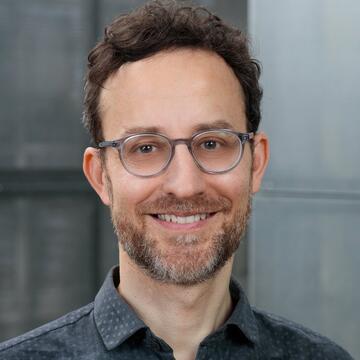
Stefan Gruber
Associate Professor, MUD Track Chair & RCI Director

Kai Gutschow
Associate Professor & Associate Head for Design Ethics
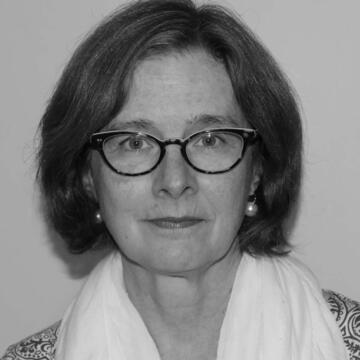
Associate Professor
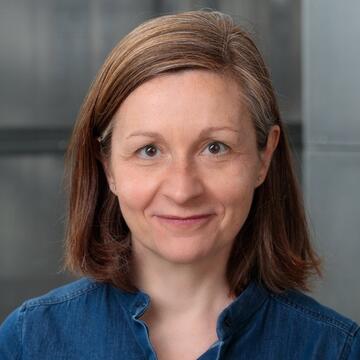
Francesca Torello
Special Faculty
Admissions Resources
Are you a current student looking for resources? Handbooks, procedures and other information can be found on the Student Resources page .
- Dean’s Letter
- Administration
- Student Work
- Media Archive
- Master of Architecture
- M.S. Advanced Architectural Design
- M.S. Computational Design Practices
- M.S. Critical, Curatorial & Conceptual Practices
- Ph.D. Architecture
- New York/Paris
- Intro Program
- M.S. Architecture and Urban Design
- M.S. Urban Planning
- Ph.D. Urban Planning
- M.S. Historic Preservation
- Ph.D. Historic Preservation
- M.S. Real Estate Development
- Initiatives
- Exhibitions
- Publications
- Academic Calendar
- Hybrid Pedagogy Guide
- Policies & Resources
- Career Services
- Student Organizations
- Avery Library
- Arthur Ross Architecture Gallery
- Making Studio
- Output Shop
- Preservation Technology Lab
- Thinking About Applying
- Application Process
- After You’re Admitted
- Tuition & Aid
PhD Architecture Open House
Additional Resources
Visit the program website to browse a list of dissertations completed in the PhD in Architecture Program at Columbia GSAPP.
Application Link
The Architecture Ph.D. Program is administered by the Graduate School of Arts and Sciences (GSAS). All application instructions, deadlines and procedures are available on the GSAS website
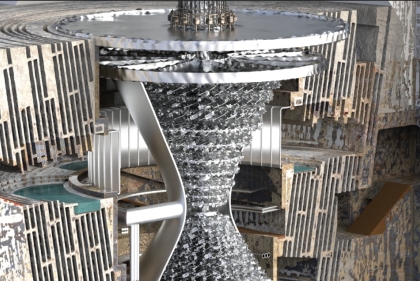
Stuart Weitzman School of Design 102 Meyerson Hall 210 South 34th Street Philadelphia, PA 19104
215.898.3425
Get Directions
Get the latest Weitzman news in your Inbox:
Phd / ms in architecture.

Welcome to the PENN Ph.D. and MS Programs in Architecture. Our graduate group faculty, candidates, students, and alumni welcome you to our website, eager to share with you their commitment to advanced research in architecture. Each in their own way seeks to cultivate knowledge, awareness, and invention in one of the oldest academic disciplines. Dedicated to thinking and making, as well as to critical questions and inventive solutions, the PENN Ph.D. and MS Architecture community invites you to join us.
Read a letter from the Chair
Degree Programs
The latest in phd / ms in architecture.

Meet the People of PhD Architecture

Dissertations
Dissertations in preparation.

Dissertations Defended

Past Events
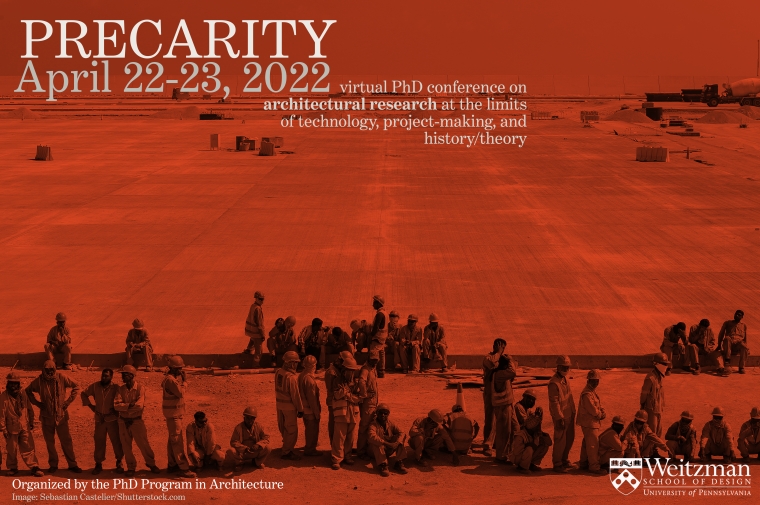
Architecture
Why study architecture.
University of Cincinnati’s Ph.D. Program in Architecture is a post-professional degree program of advanced theoretical studies in architecture with a focus on the acquisition of critical skills related to architectural production, both built and theoretical. It is intended primarily for students already in possession of a graduate degree in architecture or a related field such as interior design, planning, or landscape architecture. The Ph.D. program is an outgrowth of the university’s longstanding MS Program in Architecture, whose focus has traditionally been on architectural history, theories, and criticism as they relate to architectural practice. The program exposes students to a range of concepts in the field and fosters the ability to question and assess the built environment and the documents that relate to it.
In addition to a common core consisting of coursework in architectural theories and research methods, students complete courses in a minor field, demonstrate mastery of a major with the qualifying exam, and successfully defend a dissertation proposal in the third year, qualifying for candidacy and achieving ABD (“all but dissertation”) status. Students research, write and defend the dissertation in the final years of the program. With faculty members with technical expertise in human and environmental factors, computation, parametric design, and robotics in addition to the program’s traditional strengths in history, theory, and criticism, the program can accommodate a range of student interests. The major exam is a multi-day written examination based on a reading list agreed upon among the committee members.
To fulfill the minor requirement, students may propose an individual course of study, supervised by a professor other than the dissertation chair, or they may choose from among a number of approved graduate certificates offered by the university. Popular options include Historic Preservation; Urban Design; Women’s, Gender, and Sexuality Studies; and Data Analytics.
Admission Requirements
Students applying to the Ph.D. Program in Architecture should have completed a Master's degree in architecture or a related field prior to matriculation. Students with an undergraduate degree or with an unrelated graduate degree must instead apply for the MS Program in Architecture. Some students enter the Ph.D. program directly from the MS program. These students retain their credits from their MS studies and enter the Ph.D. program at an advanced phase commensurate with their completed studies.
Unofficial transcript(s) from all colleges/universities attended are required. Official transcripts are not required during the admissions process, and only unofficial transcripts are required for the application. Applicants should not send official transcripts until they are offered admission and confirm enrollment to the university. For complete transcript requirements, please view the Transcript Submission Policy webpage.
A portfolio of design, art, or other graphic work is optional. The portfolio is an opportunity to demonstrate your design abilities, artistic talents, or other information you deem pertinent to your application. The content does not have to be architectural if your background is in another discipline. Written project statements to accompany visual work are helpful. Portfolios are submitted online. We do not accept hard copies of portfolios.
Three letters of recommendation from persons who are in a position to evaluate your abilities and your potential for success as a graduate student are required. There is no standard form to fill out; instead, based on the information you provide in your application, recommenders will be emailed instructions on the process for submitting letters of recommendation.
A summary of your academic and professional experiences is required.
A two-page statement of your interest in graduate study in architecture is required. This should be a concise, articulate presentation of your academic and career goals, and any specific interests you have in architectural topics for graduate research and design. It should reflect your prior intellectual and professional engagement with these issues, and may also provide some additional perspective on the work illustrated in the portfolio.
Students applying to the Ph.D. program must submit one or two writing samples demonstrating the ability to conduct scholarly research and examine theoretical concepts. The essays can expand on the areas of research interest or on any topic.
Applicants to the Ph.D. Program in Architecture must demonstrate a commitment to the critical study of architecture and related design fields, including interior design, urban design, and landscape architecture. Prior education or working experience in architecture or a related field is desirable. Excellent writing skills and an interest in theoretical research are essential. Students whose English writing or speaking skills are not adequate for the demands of the curriculum must enroll in advanced, graduate-level English as a Second Language coursework prior to, and sometimes in tandem, with program coursework.
The Ph.D. Program in Architecture prepares researchers, educators, and practitioners for advanced scholarly, pedagogic, and professional work in architecture and related fields. Most graduates of the program become full-time professors or practitioners of architecture. Other career opportunities include historic preservation, public policy, curating, journalism, and institutional administration.
Because UC’s Ph.D. Program in Architecture has a small number of students, we are able to facilitate one-on-one student and faculty advising and collaboration. Students work with their faculty to develop their research and writing skills and they publish and present their work in national and international venues. While the program does not have separate tracks for students pursuing technical research, program faculty members assist students in identifying coursework and campus resources to develop the necessary competencies. All entering students have the opportunity to consult with multiple members of the Ph.D. Program faculty and with the program coordinator to determine appropriate elective coursework and dissertation committee composition.
- The city of Cincinnati, once called the "Queen City of the West" by Henry Wadsworth Longfellow, provides an excellent array of cultural resources for students who intend to pursue a degree in the visual arts. It offers the energy and assets of a larger city, along with quiet neighborhoods steeped in rich traditions. Cincinnati offers live music venues that range from top-notch symphony and opera companies to a growing pop and rock community. Home to the Cincinnati Art Museum, the Taft Museum and the Contemporary Arts Center, the city also enjoys the presence of numerous art galleries and a strong support system among practicing artists. Cincinnati is situated within driving distance of Chicago, Pittsburgh, Atlanta and New York City, allowing DAAP students to take advantage of the rich cultural resources of these cities as well.
- UC's College of Design, Architecture, Art, and Planning (DAAP) is one of the most comprehensive colleges of its type in the country. A collection of nationally respected design and art programs is housed in a unique and educationally stimulating architectural setting. Architecture students have opportunities to enroll in courses in a range of related disciplines and to participate in interdisciplinary studios or special projects.
- UC’s emphasis on interdisciplinary studies facilitates interaction with counterparts in other schools of the College of Design, Art, Architecture, and Planning as well as other colleges such as the Engineering, Arts and Sciences, Medicine, and the College Conservatory of Music. Such interdisciplinary studies should be planned in consultation with PhD Program faculty members and approved by the Ph.D. Program coordinator.
- Eligible students accepted to the Ph.D. Program in Architecture may compete for a limited number of scholarships and assistantships. All students are required to participate in a teaching practicum as part of the program, and many are chosen for paid teaching assistantships in the latter years of the program. Students are also eligible to work in campus jobs for up to 20 hours per week when classes are in session and 40 hours during vacations.
- The DAAP college library has an outstanding collection of books, periodicals and visual resources supporting architecture, planning, design, art history and related subjects. Access to library holdings is provided by an automated online catalog, UCLID, which provides access to the University of Cincinnati Library information database, and through OhioLINK, the holdings of other academic libraries throughout Ohio.
- The Computer Graphics Center is a state-of-the-art university facility with hardware that includes PCs, Macs, and peripherals such as scanners, plotters and digital video-editing suites. Students have access to sophisticated graphics equipment and receive hands-on instruction to augment the use of laptops in the classroom.
- The college supports a Rapid Prototyping Center, which is the home of state-of-the-art equipment that allows students to create communication aids for their work. Using CAD (computer-aided design) models, students are able to create physical models using three basic methods: 3-D printing, large format laser-cutting and CNC (computer numeric control) devices.
For applicants whose native language is not English, a TOEFL (Test of English as a Foreign Language) score of at least 100 iBT (600 paper) or an IELTS score of at least 7.0 is common and is typically our minimum. The university requires minimum scores of 80 on the TOEFL and 6.5 on the IELTS. Applicants with scores below the campus minimums will not reach the Ph.D. in Architecture admissions committee for review. Students whose scores are above the campus minimum but below the Ph.D. in Architecture Program standards, or students whose English writing or speaking ability does not meet program expectations, will be considered on a case-by-case basis, however, they must agree to take graduate-level ELS coursework and possibly other courses as a condition of acceptance.
- Guide: Ph.D 2019
- Guide: Ph.D 2018
- Guide: Ph.D 2017
Application Deadlines
Early Admission
General Admission
ALL applicants must apply by January 10th .
The application process begins with an online UC Graduate Application . Supplemental materials are to be submitted online through the application process.
New students are admitted for the fall semester. We will notify successful candidates by April 15. An offer of admission may be withdrawn if a candidate does not accept within six weeks of our offer.
In general, the program offers neither deferrals nor admission in semesters other than fall, however individual requests for admission deferrals and for spring semester admission may be considered on a case-by-case basis depending on the specific nature of the request and the ability of the program administration to accommodate it.
The architecture program of the University of Cincinnati has been accredited by the National Architectural Accrediting Board (NAAB) continuously since 1948, and its courses satisfy requirements maintained by various state architectural registration boards.
In the United States, most state registration boards require a degree from an accredited professional degree program as a prerequisite for licensure. The NAAB, which is the sole agency authorized to accredit U.S. professional degree programs in architecture, recognizes three types of degrees: the bachelor of architecture, the master of architecture, and the doctor of architecture. A program may be granted a 8-year, 3-year, or 2-year term of accreditation, depending on the extent of its conformance with established educational standards. University of Cincinnati’s Ph.D. program in Architecture is not an accredited professional degree.
Contact Information
Find related programs in the following interest areas:.
- Architecture, Construction and Building Trade
Program Code: 23DOC-ARCH-PHD
Doctoral Programs
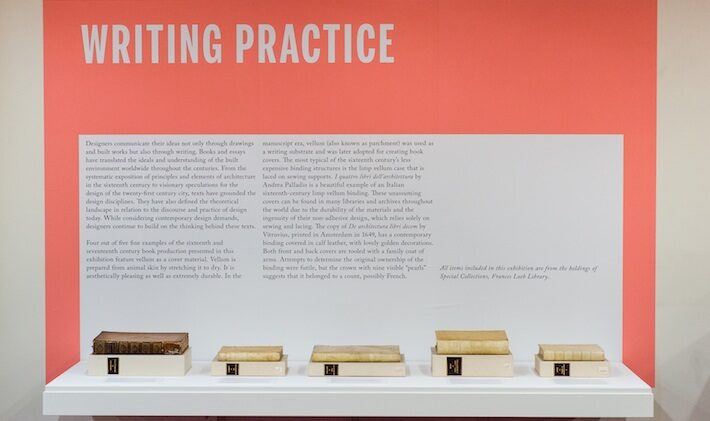
Doctoral programs at the Harvard Graduate School of Design are non-studio degree programs that allow in-depth studies of topical areas that span the traditional design disciplines.
To apply to the PhD program in Architecture, Landscape Architecture and Urban Planning, please visit the Harvard Kenneth C. Griffin Graduate School of Arts and Sciences (GSAS) admissions page .
Doctoral Programs Harvard University Graduate School of Design 40 Kirkland Street, Room 1-A Cambridge, MA 02138 (617) 495-2337
Margaret Moore de Chicojay Program Administrator [email protected]
Liz Thorstenson Program Coordinator [email protected]
Melissa Hulett Executive Coordinator [email protected]

for architecture by architects
How a PhD in Architecture Works and How It Can Help You

A doctoral degree is the highest degree one can get from a university. It is widely regarded as the pinnacle of academic achievement and the individual who holds one is considered an expert with absolute knowledge in his chosen field.
However, in today’s highly-connected world with all its intersecting fields of study and applications, many have questioned the utility of garnering so much knowledge in such a specific, highly specialized branch of study? Is it better to be an expert in one particular subject or is it better to know as much as you can in every field of relevance?
The old adage, “jack of all trades, master of none” doesn’t seem to ring true anymore in today’s cultural and societal context. But before we question the benefits of a Ph.D., let us have a look at it what it entails first.

How a PhD in Architecture Works and How It Can Help
Table of Contents

What Does A Ph.D. in architecture entail?
The title of “doctor ” or Ph.D. is awarded to a candidate who came up with an original design portfolio or a dissertation after conducting thorough and rigorous research, usually under the supervision of an academic, who is a recognized specialist in his field.
Architecture as a discipline encompasses several smaller sub-disciplines such as urban design, landscaping, interior design, etc. and the like. A Ph.D. generally challenges one set of beliefs or an established practice and improves upon it, or seeks to disapprove it altogether.
Hence, in the acquiring of a PhD, one generally needs to consider a wide range of perspectives and the cultural and historical context that led to the birth of that perspective.
So what attracts someone to do a Ph.D. in the first place?
The most common reasons students cite when pursuing a Ph.D. involves reasons or personal affinity or of passion towards a certain field of study and their eagerness to contribute something new to that topic.
Although these reasons sound academic oriented, there are also many professional/career-oriented incentives as well. And by that, we do not mean becoming a professor of architecture.
The first and foremost is, that you become an expert through the entire breadth and depth of your area of study and if one requires help or consultation in that area, they would be hard pressed to find an authority figure more suited than you. In the same time, you acquire skills that are precious for the architectural profession such as project management, leadership, teamwork and how to measure it, and also communicative abilities, because Ph.D.’s are well versed in their presentation skills.
You’re also well versed in writing exceptionally descriptive and comprehensive essays. Although more often than not, you would be hard pressed to find the time and locate the resources to write them, the pressures of academic life being what it is.
Sometimes, you might need a little external help and in times like these, the best books for architecture are a must yet the internet is often your best friend. These days you can actually buy custom essays online , s pecific, high quality essays written by experienced writers; a splendid convenience that allows you to focus more on research and less technicalities.

But Does It Really Make You A Better Designer?
An architect, by its very definition, should be able to conceptualize and create buildings and contribute to society by the creation of better, more aesthetic and more functional buildings, landscapes, towns, and cities — a designer.
Does a great teacher of architecture make for a good designer? Does in-depth knowledge of how and why architecture is the way it is make you better at conceptualizing new stuff? Do the demerits of a Ph.D. surpass the merits?
These are the questions we need to answer. Let’s take an in-depth look at the main critical arguments against pursuing a Ph.D. in architecture!
1. Ph.D.’s know a lot about a little but not enough about everything
In today’s world, the biggest of projects are undertaken by teams, with professionals of multiple disciplines. The success of a project depends on how well the team can collaborate and rally information in a mutually understandable way among all the team members.
To give you an example, in the construction of a factory, you would need a designer/ architect, an expert on the laws behind urban planning and the rules about what you can and cannot do, an industry specialist who knows about the product the factory will produce, an expert on the environment who will ascertain the amount of damage done to the environment.
Even within the core architectural team itself, you will have an expert in production lines, an expert in landscape design, an expert in building construction , etc.
In such a diverse team, one might question what is the utility of an expert in a very tiny field. Having a Ph.D. definitely does not mean you will have detailed knowledge about all these sectors.
But what it might mean is that because of your research-oriented skill set, you’ll be able to anticipate problems better and think of practical solutions faster. It’s not a substitute for experience, but if you come across a problem stumping everybody else in the room, you’re more equipped than others to solve it.
If the job itself is to investigate a problem and fix it, it would definitely require an expert or maybe multiple. People who hold a Ph.D. have a very specific skill set – the ability to investigate a problem in a rigorous fashion and develop the discipline to keep up a long and focused investigation. The new generation of architects apply this skill set to independent ventures, or in different scenarios like improving the efficiency and functionality of a previously existing structure.
However, it is important to note that, no jobs on the market are currently asking applicants to hold a Ph.D. degree. However, you can use it to enhance your application and make you stand apart from the rest of the crowd. In such a scenario, a Ph.D. does hold inherent value, but it’s up to you to make the best possible use of it.

2. Creativity does not stem from knowledge
Before we discuss our above statement, we must take a look at the current pedagogical systems in place in most universities today. Journey to any university today, and you’ll find one of two things.
Either the educations system is the same as it has been forever and it hasn’t kept up with the times. The curriculum has no space for new technological developments and has made no effort to include them in the course, nor made provisions for learning them in optional electives.
While this is not the case in most premier institutes, the premier ones suffer from a far more significant problem.
In most premier institutes, tutors and lecturers are regarded as superstars and intellectual stalwarts in their own right, and what they say is the law. Hence, they have full authority over what they teach and how they teach, lending little to no attention to established, well-defined practices of yesteryear.
Lecturers pursue their own interests without regards to the bigger picture. It does seem, that now, more than ever, in a world which is becoming increasingly more divided into its opinions and philosophies, that lecturing has become more frivolous than ever.
So, the problem with backdated course curriculums is that they don’t take into account the current social landscape and are stuck in an idealized past. And the problem with the more modern ones is that the course curriculum stems from a highly individual worldview, that of the lecturer’s.
However, the real problem is still the same. A syllabus and what it teaches is always restricted to the current epoch and the lecturer’s whims and fancies. It does not foster creativity or bolster the ability to conceptualize as you’re simply reading a book and then critically analyzing that.
Most people are of the opinion, that in order to become a better architect, i.e., a better designer you need to adopt a hands-on approach. An apprentice style situation is ideal, where you get to learn at the hands of the proverbial master. You learn by observation and from example. Inspiration is often highly personal, and it will only bloom when it has a personal touch. An apprenticeship (read internship in today’s parlance) under a skilled practitioner is the best way to learn.
Also, from observing someone else at work, you get to have a pretty good idea of the new technological developments because you get to see them in practice. You get to use them yourself. Often the invention of new technologies opens up a world of possibilities you could not have thought of before. However, the door to that world remains closed unless you use that product itself. Think photoshop and digital image processing software and its impacts on the fine arts industry.
A doctoral education does not bridge the gaps between the theoretical aspects of architecture and its day-to-day practice. Can there be an educational qualification, which justifies someone as a good architect? Or is the degree just a tool to further enhance skills the individual already had in him?

3. The age of the individual genius is over
Schools and course curriculums are forever struggling to keep up with changes and innovations in the sector. These include the increasing usage of new materials and modes of manufacturing, assembly, construction , as well as new software and tools proliferating novel methods of analysis to things which were previously hard to analyze. These include analyses of structural stresses, ambient and environmental conditions (light levels, air movement, wind pressure, temperature, humidity and the like) and also movement patterns of pedestrians and vehicles which are of utmost importance in designing traffic systems.
All this complexity, a complexity that is increasing day by day, is way beyond the intellectual capacity of any one human being. No matter how well read you are or how good you are, you cannot be in two places at once, where the work is already happening and where new development is being done.
As a result, the age of the individual genius is over, a pursuit academics have long sought after. Today, the world belongs to collaborators who can effectively collaborate with people of diverse professionals and learn from them. The world belongs to team leaders, individuals who without having expertise in specific fields can command and lead professionals from those fields and get the job done.
An academic’s focus on independent research and original thesis and findings comes in stark contrast to jobs that require collaboration and large teams of people. Most academics just aren’t qualified to lead such teams.
4. Analyzing is just as important
While most practitioners whine about students unprepared for real-life jobs, the fact remains that analyzing remains just as important as the execution of a project. Some would argue even more so.
The planning stage of a project requires a fair amount of analysis itself. Although the execution stage can comprise of a diverse group of people, the planning stage usually has like-minded individuals with a similar area of expertise. While planning, one also needs to do a good amount of research to understand which methods work best, which methods are most suited for the current project being undertaken and which methods are doomed to fail. Only after proper planning has been done, can you go forward with the execution.
Once the execution is concluded, again, an analysis needs to be done – did the project turn out the way it was supposed to, did we spend more or less money on the project that we had initially estimated (if so, why) and how can we make this process more efficient in the future. Basically, ask yourself, what did we learn from doing all this.
Doing an apprenticeship won’t help you in this regard. However, writing lab reports, conducting academic presentations, and doing comprehensive, exhaustive reviews on literature for years on end will be an immense help.
We had touched on this previously as well when we talked about developing the discipline necessary to conduct a long and thorough review of something.

Final words
Thus it would seem, getting a Ph.D. in architecture would train you to have a different skill set than a designer, but those skills are certainly just as valuable and have just as much commercial capital in the real world.
A designer learns to think with their fingers and utilize muscle memory, drawing on unconscious bodily knowledge. An academic, on the other hand, will think with their heads and will draw on conscious knowledge which has been acquired over years of rigorous research.
The reason for this incongruity is that design and the study of architecture are essentially two separate subjects, but they are so intertwined it’s hard to separate them.
Related Articles
The Best Architecture Portfolio Examples, Covers, Designs | Architecture Lab
How To Get An Architecture Job With No Experience
How To Write The Perfect Architecture Cover Letter

Leave a Comment

Study at Cambridge
About the university, research at cambridge.
- Undergraduate courses
- Events and open days
- Fees and finance
- Postgraduate courses
- How to apply
- Postgraduate events
- Fees and funding
- International students
- Continuing education
- Executive and professional education
- Courses in education
- How the University and Colleges work
- Term dates and calendars
- Visiting the University
- Annual reports
- Equality and diversity
- A global university
- Public engagement
- Give to Cambridge
- For Cambridge students
- For our researchers
- Business and enterprise
- Colleges & departments
- Email & phone search
- Museums & collections
- Postgraduate
- PhD in Architecture
- Department of Architecture
- About the Department overview
- The Faculty of Architecture and History of Art
- A History of the Architecture Department
- Scroope Journal overview
- Current Issue
- Call for Abstracts
- Past Issues
- The Faculty Library
- 100 Years of Drawings
- Support Us overview
- Dalibor Vesely Fund overview
- The Cultural Significance of Architecture: A conference in memory of Dalibor Vesely overview
- Session 1: History and Philosophy of Architecture overview
- To the conference in memory of Dalibor Vesely - José de Paiva
- Low Relief - or, articulation tied to embodiment - David Leatherbarrow
- Dalibor Vesely and The Primacy of Orality - Perez-Gomez
- Karsten Harries - Remembering Dalibor Vesely
- Robin Middleton - Dalibor Vesely statement
- The Cultural Significance of Architecture - In Memory of Dalibor Vesely - Mari Hvattum
- Hvattum_Presentation1
- What is the cultural significance of architecture - Peter Carl
- The Presence of Dalibor Vesely - K Frampton
- Dalibor Vesely's Flat - The Dwelling as a Communicative Field - Dagmar Weston
- Session 2: Design and the European City overview
- Drawings: David Dernie
- Chatting about the city - Diana Periton
- Dalibor Reflections - Mohsen Mostafavi - March2016
- Creative Intelligence in Architecture - Phil Meadowcroft
- Design and the European City - Kalliope Kontozoglou
- Athanasios Spanomaridis with DALIBOR VESELY
- To DALIBOR - Athanasios Spanomaridis
- E.Parry_Dalibor Vesely conference (Session 2)_11 April 2016
- CWFrost. Fragment Craft Tradition
- David Bass - Architecture Laughter and Animals
- Diana Periton - slides
- Session 3: Legacy, New Horizons overview
- Carolyn Steel - conference slides
- Hand Drawings - P Lynch
- Sitopia – a tribute to Dalibor by Carolyn Steel
- The Cultural Significance of Architecture - In Memory of Dalibor Vesely - Stephen Witherford
- Dalibor Vesely and the criticism of architecture - Rowan Moore060416
- P LYNCH PRESENTATION - DV SYMPOSIUM EMMANUELLE COLLEGE-opt
- Architecture's Contribution - Wendy Pullan
- Biba Dow - Dalibor conf_Session 3
- Homa - diffused digital
- Homa - Conference Slides
- William Mann - Ruins of the Baroque - slides
- William Mann - Ruins of the Baroque - Slides and text
- Dalibor Vesely Memorial Conference Programme
- Conference videos via the Department YouTube Channel
- Equality, Diversity and Inclusivity
- Athena Swan
- Privacy Policy
- People Overview
- Head of Department
- Deputy Heads of Department
- Associate Professors
- Assistant Professors
- Visiting Professors
- Emeritus Faculty
- Affiliated Lecturers
- Research Staff
- Teaching Associates
- MDes Advisory Group
- Design Fellows
- Professional Staff
- Courses overview
- Undergraduate overview
- Architecture Tripos overview
- Year One Architecture
- Year Two Architecture
- Year Three Architecture
- Architecture FAQs
- Design Tripos (MDes) overview
- Year One Design
- Year Two Design
- Year Three Design
- Year Four Design
- Teaching and Assessment
- Student Life
- Preparing a Portfolio
- Reading list for candidates
- Outreach and Widening Participation
- Postgraduate overview
- Master of Architecture (MArch) Degree (ARB/RIBA Part 2)
- Postgraduate Certificate in Professional Practice in Architecture - ARB/ RIBA Part 3 overview
- HOW TO APPLY for the Postgraduate Certificate in Professional Practice in Architecture
- Dates for Cohort 2022-23
- Dates for Cohort 2023-24
- Dates for Cohort 2024–25
- MSt Architecture Apprenticeship overview
- Requirements
- Teaching and Assesment
- Fees and Funding
- MPhil in Architecture & Urban Studies (MAUS) overview
- How to apply for the MPhil in Architecture and Urban Studies
- MPhil in Architecture by Thesis
- PhD in Architecture overview
- How to apply for the PhD in Architecture
- MSt Building History overview
- Contributors
- Course Structure
- Core Modules
- Optional Modules
- Testimonials
- Building History Newsletter - Issue 11 April 2022
- Building History Newsletter March 2021
- Building History Newsletter December 2019
- Building History Newsletter July 2018
- Building History Newsletter March 2018
- Building History Newsletter July 2017
- Building History Newsletter April 2017
- Building History Newsletter December 2016
- Building History Newsletter March 2016
- Building History Newsletter 2 February 2015
- Building History Newsletter April 2014
- MSt in Interdisciplinary Design for the Built Environment
- Research overview
- Natural Materials and Structures overview
- Natural Material Innovation
- EcoHouse Initiative
- Structural Bamboo Products (SBP) overview
- Structural Bamboo Pavilion. International Association of Shell and Spatial Structures (IASS 2015). Muziekgebouw. Amsterdam
- Polymer Modified Timber
- Masonry Vaulting overview
- Tile Vaulting
- Ladrillo Recargado
- The Martin Centre: Sustainable buildings and Cities overview
- Global Urban overview
- Global Land Enclosures, Urban-Technology, and Experimental Property in Medellin’s Comunas
- African Modernism: Architecture of Independence
- The Centre for Urban Conflicts Research
- AHRC Filming Energy Research Network (FERN) overview
- Network Members
- Policy Workshops 2021-22
- Filming Workshops (2020-22)
- A Room in Mumbai
- Clean cooking and energy transitions in Mukuru (2023-24) overview
- Conflict in Cities overview
- Conflict in Cities website
- Polish-German Border Towns: Models of Transnationalism?
- MINE: Machine learning Intelligence Network for Epidemics overview
- Research & Network Workshop
- Sustainable Design Group
- Cities and Transport overview
- Aviation Integrated Modeling (AIM)
- Cambridge Futures
- Energy Efficient Cities initiative
- SOLUTIONS - Sustainable Land Use and Transport
- ReVISIONS – Regional Visions of Integrated Sustainable Infrastructure Optimised for Neighbourhoods
- Multimodal Efficient Transportation at Airports: Collalborative Decision Making (MetaCDM)
- Low Carbon Urban Design Project
- Sustainable Building overview
- Robust Hospital Environments in a Changing Climate
- Natural and Hybrid Environmental Design Strategies
- Activity-Space Research
- Sustainable Building Policies
- The Architecture of Light
- Light in Libraries
- Health, Wellbeing and Buildings
- Heating Historic Churches
- Digital Studio overview
- Digital Studio Symposium 2017
- Cambridge University Centre for Risk in the Built Environment (CURBE) overview
- Eyewitness Reports of the 26.12.04 South Asian Tsunami
- Building damage and casualties in the Kashmir Earthquake of 8.10.05
- Indicators for Measuring, Monitoring and Evaluating Post-Disaster Recovery
- Flood Narratives
- Pan-participatory Assessment and Governance of Earthquake Risks in the Ordos Area (PAGER-O)
- Learning from Earthquakes: Building Resilient Communities Through Earthquake Reconnaissance, Response and Recovery
- Expertise Under Pressure
- Behaviour and Building Performance overview
- The B-bem project: The Bayesian building energy management Portal
- The User-TEC project: User Practices, Technologies and Residential Energy Consumption
- Circular Maker Cities
- Healthy Design in Naval Architecture
- Circular maker cities: The European Pop-Machina research project overview
- Publications
- An Urban Room for Cambridge
- Public Map Platform project supporting green transition secures major funding
- History and Theory overview
- Building Histories overview
- The Development of the Timber Roof Truss 1660-1710
- History of Brick overview
- The Development of Brickwork in England 1610-1710
- Brick: a World History
- Wren, St Paul’s and 17th Century Craftsmen
- Staircases: History, Repair and Conservation
- History of Doors
- Proceedings of the Construction History Society Conferences
- Erasmus Summer Schools on Construction History 2011-2013
- Applying to Study Building History
- Completed PhD Research overview
- Wartime Huts
- Female Architectural Patronage in Eighteenth-Century Britain
- Wallpaper and Decorating Records 1824-1938
- Local Tradition and British Influence in Building Construction in Shanghai (1840-1937)
- Timber Railway Bridges in the Nineteenth Century
- Seventh Annual Conference on Construction History April 2020 overview
- Conference Programme
- Conference Proceedings overview
- Iron and Steel
- Before the Eighteenth Century
- Eighteenth Century
- Nineteenth Century
- Twentieth Century
- Eighth Annual Conference on Construction History, August 2021
- Ninth Conference of the Construction History Society
- The Library in History
- The Soane and Freemasonry
- Water and Civilisation
- Informal Cities in Latin America
- Domestic Devotions: the place of piety in the Italian Renaissance home
- Alvar Aalto’s church architecture in Germany
- Modern Architecture and the Sacred
- Hans Döllgast (1891-1974): Witness and Protagonist of Modern Architecture in Germany
- Projection: Alvar Aalto and the Moving Image
- Cambridge Design Research Studio
- UNFOLD: Decolonising Architecture at Cambridge website
- Research Events overview
- The Martin Centre Research Seminar Series
- Cambridge City Seminars: Urban Guilds in contemporary placemaking
- The Cambridge Architectural History Seminars
- Ax:son Johnson Centre for the Study of Classical Architecture Seminars
- Conferences overview
- Applied Urban Modelling (AUM) overview
- AUM2024: Reconnections
- AUM2022: Understanding common challenges
- AUM 2020 overview
- AUM2020 Global Workshop (online) - weblink for call for abstracts
- Session 1: Launch of the Applied Urban Modelling Symposium 2020 (AUM2020)
- Session 2: Status report: Around the globe (22 Oct 2020)
- Session 3: Emerging insights into autonomous driving (26 Oct 2020)
- Session 4: Taking a long view: the effects of transport investments (29 Oct 2020)
- Session 5: Modelling from micro to meso and macro scales (2 Nov 2020)
- Session 6: Effects of the COVID-19 pandemic: from monitoring to modelling (5 Nov 2020)
- Session 7: Urban mobility: now and future (9 Nov 2020)
- Session 8: The economics of cities (12 Nov 2020)
- Session 9: Modelling Large City Regions (16 Nov 2020)
- Session 10: The microscopic dimensions (19 Nov 2020)
- Session 11: Urban modelling and the planning of the built environment (23 Nov 2020)
- Session 12: Spatial modelling as rapid response to mitigate the pandemic (26 Nov 2020)
- Session 14: Concluding session (3 Dec 2020)
- Urban Modelling Archive
- Joint Cambridge-Berkeley Urban Design Charrette overview
- John G. Ellis: Urban Design Seminar: Teaching Urban Design: A Hands-on Experience
- Old Oak Common, London: ‘Fundamental Questions’
- Old Oak Masterplan:Question & Answer Session for shortlisted tenderers
- Old Oak and Park Royal: Guided Tour Briefing Pack
- PARK ROYAL ATLAS: An Employment Study of London’s Largest Industrial Area
- Spectres of Time in Space: Tracing Phantom Temporalities with Architectural Methodologies
- Current PhD Research in the Department overview
- Ibrahim Abdou: Cairo’s Vacant Houses: Trajectories of accumulation, regulation, and improvisation
- Karam Alkatlabe: How can Digital Participatory Planning and Collaborative Urban Design reshape the urban recovery process in post-disaster cities? The case of Damascus
- Sam Aitkenhead: The unintended consequences of designing out friction from the home of the future
- Anna Michelle Behr: Understanding the English Country House Hotel: Early Hotel Conversions in the Late Nineteenth and Early Twentieth Centuries
- Anna Boldina: Urban Hiking. Factors that can persuade pedestrians to choose more physically challenging routes in urban environment, in connection with their physical abilities overview
- Fatma Beyza Celebi: Cosmopolitan Nostalgia: Examining local memory in contemporary Istanbul focusing on spatial and visual representations of the city’s cosmopolitanism in the 1920s and 1930s
- Michael Collins: The transformative potential of urban agriculture: Re-framing architectural theory and practice
- Mohamed Derbal: Space, time and community: German architectural discourse and the search for national unity, 1890-1914
- Joshua Dimasaka: Global Disaster Risk Audit using Artificial Intelligence and Earth Observation Data
- Hamideh Farahmandian: An Investigation into the Cinematic Representations of Urban Informality in Iran
- Nicholas Frayne: Spaces of Violence and Healing: the material agency of architecture in peacebuilding in Kenya
- Vendela Gambill: Land use planning and applied urban modelling: natural limits to growth in London
- Yelda Gin: Emerging Earthen Architecture: Digital Design and Fabrication for Building with Earth
- I-Dec Goh: Bias mitigated data-driven façade design of social housing in Singapore using thermal and imaging information
- Elizabeth Baldwin Gray: Conceptions of the Gothic: Romantic Medievalism in Early Modern German Architecture
- Charlie Hamilton (FCILT): Mass Transit in Small to Medium Sized Cities
- Juliet Harrison-Egan: Spaces of Education: the role of schools in the post-apartheid city
- Yu Hu: The Evolution of Urban Office Space in The Age of Information and Communication Technology
- Sean Hughes: The 21st Century Suburb: A Method for Transit Driven Redevelopment in North American Suburbia
- Yasser M. Khaldi: Governing Renewable Energy Transition in Conflict Contexts: The Case of Palestine
- Bing-Tao Lee: Biophilic Design and Mental Wellbeing: The Relationship Between Indoor Plants, Positive Emotions and Behaviour
- Yufei Li: Atlas in Motion: Visualising Manchuria through Moving Images
- Mariana Llano Valencia: Challenging the influence of coloniality, whiteness and patriarchy in urban planning in Cartagena, Colombia
- Yusi Luo: Housing Choices of Young graduates in the UK
- Fatma Mhmood: Social Narratives and Women’s Spatial Experiences of Parks and Desert Landscapes in the UAE
- Heather Mitcheltree: Geographies of gendered and domestic violence in Australia
- Ekaterina Mizrokhi: Life in Anachronistic Space: Awaiting Demolition in Moscow's Soviet-era Standardised Housing
- Ummiye Seyda Mutlu: Urban Rooms: Places of Mediation, Participation, and Urban Change
- Jiayu Pan: Redesigning interior spaces to accommodate social distancing for the rare events
- Lingzi Pan: The role of social connectedness in quality-of-life measurement and urban modelling
- Zhikai Peng: Exploring Urban Spatial Behaviour Under Thermal Stress: How variations in sun and wind conditions due to urban form affect public space use?
- Georgia Politi: The life and work of Sir Horace Jones, PRIBA (1819-1887)
- Natcha Ruamsanitwong: Modernising Britain: Sir Leslie Martin (1908-2000) and his role in shaping the Architectural Education in Britain
- Filomena Russo: Restorative characteristics of intermediate architectural environments
- Michael Salka: The Role of Geospatial Data in Developing Nature-Based Value Chains for the Built Environment
- Aisha Sobey: Urban futures: The implications of smart cities and digital living for wellbeing
- Lei Song: Fountains, Baths, and Urban Water Supply in England, 1400 - 1800
- Maoran Sun: Scenario-based strategies for decarbonizing Hard-to-Decarbonize housing
- Cleo Valentine: Architectural Neuroimmunology: Assessing the Impact of Architectural Form on Human Neuroinflammation
- Jeroen van Ameijde: Quality of life in high-density urban environments: Data-driven analysis of Hong Kong’s public housing environments and social interaction
- Eimar Watson: The British Marble Industry 1748-1905
- Jonathan Weston: Beyond the Pretty Picture: Exploring the Aesthetic and Function of the Architectural Visualisation
- Eduardo Wiegand: The Life Cycle Design of Multi-storey Wood Buildings: opportunities for efficiency across the construction value chain
- Yue Ying: Understanding variability in neighbourhood responses to regeneration initiatives
- Di Zhao: European Railway Buildings in China 1890-1940: an example of cross-cultural exchange
- Lingzheng Zhu: Mediating Nature: The Practice of Synthetic Media in the Contemporary Eastern Context
- Shanshan Xie: An investigation of heterogeneous commute mode choices to link travel demands to flexible working policies: using an Early Stopping Bayesian Data Assimilation
- Visiting Scholars
- Visiting Students
- News overview
- Events overview
- Past Events
- Professional Studies Advisors (PSA) overview
- Postgraduate Certificate in Professional Practice in Architecture - ARB/ RIBA Part 3
- MSt Architecture Apprenticeship
- MPhil in Architecture & Urban Studies (MAUS)
- MSt Building History
Course requirements:
Candidates accepted for this course will have a 1st class or a high 2i honours degree and, a Masters degree with 70% overall (or equivalent) in Architecture or a related discipline.
The University requires all applicants to demonstrate competence in the English language at a very high level before they begin their proposed course of study - adherence to this requirement is strict. You must be able to demonstrate that you are able to communicate in English at a level and in an idiom suitable to the subject. You will, therefore, need to provide evidence that you meet the University’s minimum requirements for competence in English. For further information see Postgraduate Admissions Office .
How to Make an Application for the PhD in Architecture
If you do meet the course requirements, you are recommended to consult the list of our established University Teaching Officers (UTOs) and their research interests (see below for links to information about each of our UTOs). If one of our UTOs has relevant research interests to your own, please email them directly with a short research proposal of about 300 words, an example of your writing and a CV to determine whether they are potentially available to work with you as a supervisor before you make a formal application. See:
Dr Ronita Bardhan - Data-driven built-environment design, spatial analysis and climate change, Big data for sustainability in the built-environment, design for demand side energy management
Professor James Campbell - History of building construction, history of library design
Dr Ramit Debnath - Cutting-edge interdisciplinary domain of environmental data science, computational social science, and human-in-the-loop AI design to enable climate action. Applicants should be able to demonstrate excellent data science and quantitative research skills and a passion for interdisciplinary engagement
Dr Michal Gath-Morad - Exploring how architectural design impacts spatial cognition, behaviour, and social dynamics in diverse environments, from healthcare and workplaces to complex urban settings. Proposals can encompass empirical studies, the development of digital simulation tools for human-centred design, or action research investigating the influence of evidence-based design tools on design cognition
Dr Felipe Hernández - Architectural and urban design, participatory design, social urbanism, history and theory
Professor Ying Jin – City planning, urban design, and urban modelling
Dr Irit Katz - Socio-politics of architecture and urbanism; transitional spaces, camps and borderscapes; spaces of displacement, migration, and climate mobilities; ethnic and cultural diversity, exclusion and inequality; conflict and violence; housing insecurities; radical spatial and urban transformations; participatory architecture and urban design
Dr Antiopi Koronaki - Computational design, architectural engineering and geometry, and design optimization principles. Potential topics may include, but are not limited to automation and design for disassembly, modular buildings and circularity in the construction sector, engineered timber construction, as well as advanced fabrication and robotics in architecture
Dr Michael Ramage – Designing and building structural masonry spans using traditional techniques and new materials
Professor Flora Samuel - Affordable housing, participatory planning, community consultation, social value and mapping data with communities
Dr Darshil U. Shah - Design and manufacture with biocomposites and low-carbon materials, Structure- property-processing relations in natural materials and structures, Biomechanics and biomimetics, History of natural materials & materials processing, and Design education and pedagogy
Dr Nicholas Simcik Arese - Social theory and urban planning, international development, property rights, youth, masculinity, migration, Middle East, Mediterranean, Mexico, legal geography, science and technology studies, anthropology of value, ethnography
Professor Emily So - Casualty estimation in earthquake loss modelling, risk in the built environment.
Professor Koen Steemers – architectural and urban implications of environmental issues ranging from energy use to human comfort
Dr Max Sternberg – architecture & philosophy, socio-politics of architecture, urban conflict, architectural history
Dr Minna Sunikka-Blank - sustainable building policies, thermal retrofit, energy use behaviour, aesthetics of sustainable architecture
Dr Matteo Zallio - Interdisciplinary research on Inclusive Design for the built environment, product, and service design
You are recommended to only make a formal application via the University’s Graduate Admissions Office, once an established UTO has confirmed that they would be interested to consider a formal application. Please note that an offer of admission to the University is subject to final approval by the University's Graduate Admissions Office. Do not assume that you will be made an offer on the grounds that your prospective supervisor has suggested you make a formal application – this just represents the first stage of admission administration.
All applications must be made via the Applicant Portal available on the Postgraduate Admissions Office website. It is important that you read through the information available on the Graduate Admissions Office website before submitting your application. If you are already a current graduate student at Cambridge you will be referred to as a ‘Continuer’ on the Graduate Admissions Office website.
You will need to arrange for the following documents to be submitted with your application:
- Academic Reference(s)
- A Personal Reference will be required if you are applying for the Gates Cambridge Scholarship
- Evidence of Competence in English if English is not your first language
- Sample of Work - this could be a journal publication or a chapter from your undergraduate dissertation
- Research Proposal of 1000 - 1500 words should consist of a topic and a hypothesis, a literature review, a statement on method, and key references
Application Deadlines
The PhD in Architecture commences in October each year and applications for the course can be made from the preceding September. All applications must be made via the Applicant Portal available on the Postgraduate Admissions Office website. It is important that you read through the information available on the Graduate Admissions Office website before submitting your application.
The final deadline for applicants seeking funding is 7 January 2020. Even if you are not seeking funding, we strongly recommend that you submit your application by 7 January, as no applications will be accepted once this competitive and popular programme is full.
If places are still available on programmes beyond this deadline; self-funded applicants will continue to be considered until the final deadline of 15 May 2020. No applications will be considered after this deadline.
Course Fees
Information relating to the fee for this course is available from the Postgraduate Admissions Office .
If you are seeking funding for your course via one of the University’s main funding competitions, there are specific deadlines and eligibility criteria for each competition. Please check the Funding Section of the Postgraduate Admissions Office website for information and application deadlines.
Applicants classed as 'Home' or 'EU' for fees purposes and wish to research an AHRC approved research subject are eligible to be considered for an Open-Oxford-Cambridge AHRC DTP studentship. Applicants wishing to be considered for these awards need to check the appropriate box on the application form. Applicants will also need to ensure that they make their application by the funding competition deadline for Home/EU students. Please see the University's AHRC DTP funding website for more information: https://www.csah.cam.ac.uk/Education/ahrcdtp together with the Open-Oxford-Cambridge AHRC DTP website: https://www.oocdtp.ac.uk/
The Department sometimes offers EPSRC awards for students classified as 'Home' or 'EU' for fees purposes. These awards are advertised on the Department’s website and other media during the Easter Term (Summer Term) if available. Applicants who have already applied for the PhD degree will automatically be considered for these awards if they meet the criteria for them.
After your Application is Submitted
When the application reaches the Department, it will be considered by the Department’s Graduate Admissions Team. Applicants may be invited for an interview in Cambridge, or, via Skype if it is not possible to travel to Cambridge. The Faculty’s Degree Committee will then consider the application and make a recommendation to the Graduate Admissions Office as to whether an offer of a place on the course should be made, and if so, with what academic conditions.
Please be aware that this process may take several months. You can check the status of your application at any time via your Applicant Portal.
Full information about making your application, Colleges, fees and funding opportunities is provided on the Postgraduate Admissions Office website pages.
For further information on graduate admission to the Department of Architecture contact: [email protected]
At a Glance
Course length and dates:
3 years full-time/5 years part-time, October start.
Examination:
A dissertation of not more than 80,000 words.
Academic requirement:
A 1st class or a high 2i honours degree in Architecture or a related discipline, and a Masters degree with merit (if a merit category exists).
English language requirement:
See Postgraduate Admissions Office .
Applications accepted from:
The preceding September.
Application Deadlines:
The final deadline for applicants seeking funding is early January, please see Postgraduate Admissions for exact date. Even if you are not seeking funding, we strongly recommend that you submit your application by 7 January, as no applications will be accepted once this competitive and popular programme is full.
Course Fees:
Information relating to the fee for this course is available from the Postgraduate Admissions Office .
If you are seeking funding for your course via one of the University’s main funding competitions, there are specific deadlines and eligibility criteria for each competition. Please check the Funding Section of the Postgraduate Admissions Office website for information and application deadlines.
- Postal Address: Department of Architecture 1-5 Scroope Terrace Cambridge CB2 1PX Tel: 01223 332950
- Information provided by: [email protected]
- Site Privacy & Cookie Policies
- How to find us: click here for our location on a map
© 2024 University of Cambridge
- Contact the University
- Accessibility
- Freedom of information
- Privacy policy and cookies
- Statement on Modern Slavery
- Terms and conditions
- University A-Z
- Undergraduate
- Research news
- About research at Cambridge
- Spotlight on...
Main navigation
- Graduate programs
- How to apply
- Research & supervision
- Student experience
- Connect with us
Architecture (PhD)
Program description.
The Doctor of Philosophy (Ph.D.) in Architecture offered by the Peter Guo-hua Fu School of Architecture in the Faculty of Engineering is a research-intensive program that emphasizes rigorous and thought-provoking learning opportunities. The program's objective is to equip students with skills in original thinking, literature review, and information synthesis to pursue professional opportunities in academia or industry.
Unique Program Features
- The School operates a number of important auxiliary facilities that include workshops, research labs, and other resources that support both teaching and learning activities in addition to research activities;
- Students benefit from access to The Blackader-Lauterman Library of Architecture and Art, the John Bland Canadian Architecture Collection, The Architecture Slide Library, and The Orson Wheeler Architectural Model Collection;
- Our program is accredited by the Canadian Architectural Certification Board (CACB) and is recognized as accredited by the National Council of Architectural Registration Boards (NCARB) in the U.S. (Note: while graduation from a CACB-accredited program does not assure registration, the accrediting process is intended to verify that each accredited program substantially meets those standards that, as a whole, comprise an appropriate education for an architect).
University-Level Admission Requirements
- An eligible Bachelor's degree with a minimum 3.0 GPA out of a possible 4.0 GPA
- English-language proficiency
Each program has specific admission requirements including required application documents. Please visit the program website for more details.
Visit our Educational credentials and grade equivalencies and English language proficiency webpages for additional information.
Program Website
PhD in Architecture website
Department Contact
Graduate Program phd.architecture [at] mcgill.ca (subject: PhD%20in%20Architecture) (email)
Available Intakes
Application deadlines.
| Intake | Applications Open | Application Deadline - International | Application Deadline - Domestic (Canadian, Permanent Resident of Canada) |
|---|---|---|---|
| FALL | September 15 | January 15 | January 15 |
| WINTER | N/A | N/A | N/A |
| SUMMER | N/A | N/A | N/A |
Note: Application deadlines are subject to change without notice. Please check the application portal for the most up-to-date information.
Application Resources
- Application Steps webpage
- Submit Your Application webpage
- Connecting with a supervisor webpage
- Graduate Funding webpage
Application Workshops
Consult our full list of our virtual application-focused workshops on the Events webpage.
Department and University Information
Graduate and postdoctoral studies.
Get the Reddit app
A community for students, professionals, and lovers of architecture.
What would be the reason someone would get a PhD in architecture?
Are there any benefits or even shortcomings to pursuing a doctoral degree? Is there much of a difference in having a PhD vs having a B.Arch or M.Arch?
- Hispanoamérica
- Work at ArchDaily
- Terms of Use
- Privacy Policy
- Cookie Policy
- Architecture News
Top-Rated Universities for Studying Architecture in 2024, According to QS World Rankings

- Written by Maria-Cristina Florian
- Published on June 06, 2024
QS, Quacquarelli Symonds World University Rankings , has announced the annual list of the top universities to study Architecture and the Built Environment in the year 2024. The ranking evaluates over 1,500 institutions from over 100 locations. The evaluation system has been updated this year to include new metrics such as sustainability, employment outcomes, and international research networks.
The top three contenders, the Bartlett School of Architecture , MIT , and Delft UT , have maintained their ranking from 2023 , with ETH Zurich showing a slight decrease from an equal third position to the fourth. In the sixth position, Harvard University stands out as the top university for employer reputation in this subject. Among the top 10 universities, Politecnico di Milano had the greatest advancement in rankings, moving from the 10th position last year to the 7th.

Read on to discover the top 50 universities for Architecture and Built Environment studies in 2024. To discover the full list of university rankings, go to the official website of the QS World University Rankings .
Related Article
1. The Bartlett School of Architecture | UCL, United Kingdom 2. Massachusetts Institute of Technology (MIT), United States 3. Delft University of Technology , Netherlands 4. ETH Zurich - Swiss Federal Institute of Technology, Switzerland 5. = Manchester School of Architecture , United Kingdom 5. = National University of Singapore (NUS), Singapore 6. Harvard University , United States 7. Politecnico di Milano , Italy 8. Tsinghua University , China (Mainland) 9. University of California, Berkeley (UCB), United States 10. University of Cambridg e, United Kingdom

11. EPFL, Switzerland 12. The University of Hong Kong, Hong Kong SAR 13. Tongji University, China (Mainland) 14. The Hong Kong Polytechnic University, Hong Kong SAR 15. The University of Tokyo, Japan 16. Columbia University, United States 17. University of California, Los Angeles (UCLA), United States 18. RMIT University, Australia 19. Cornell University, United States 20. Universidad Politécnica de Madrid (UPM), Spain

21. = Politecnico di Torino, Italy 21. = Technische Universität Berlin (TU Berlin), Germany 23. Georgia Institute of Technology, United States 24. = Technical University of Munich, Germany 24. = The University of Melbourne, Australia 26. Universitat Politècnica de Catalunya · BarcelonaTech (UPC), Spain 27. The University of Sydney, Australia 28. = Nanyang Technological University, Singapore (NTU), Singapore 29. University of Oxford, United Kingdom 30. = KTH Royal Institute of Technology, Sweden 30. = Pontificia Universidad Católica de Chile (UC), Chile

43. University of British Columbia, Canada 44.= Eindhoven University of Technology, Netherlands 44.= Princeton University, United States 44.= Shanghai Jiao Tong University, China (Mainland) 44.= University of Pennsylvania, United States 48. Peking University, China (Mainland) 49. Yale University, United States 50. = University of Texas at Austin, United States
Image gallery

- Sustainability
世界上最受欢迎的建筑网站现已推出你的母语版本!
想浏览archdaily中国吗, you've started following your first account, did you know.
You'll now receive updates based on what you follow! Personalize your stream and start following your favorite authors, offices and users.
At the New York Fed, our mission is to make the U.S. economy stronger and the financial system more stable for all segments of society. We do this by executing monetary policy, providing financial services, supervising banks and conducting research and providing expertise on issues that impact the nation and communities we serve.

Introducing the New York Innovation Center: Delivering a central bank innovation execution

Do you have a request for information and records? Learn how to submit it.

Learn about the history of the New York Fed and central banking in the United States through articles, speeches, photos and video.
Markets & Policy Implementation
- Effective Federal Funds Rate
- Overnight Bank Funding Rate
- Secured Overnight Financing Rate
- SOFR Averages & Index
- Broad General Collateral Rate
- Tri-Party General Collateral Rate
- Treasury Securities
- Agency Mortgage-Backed Securities
- Repos & Reverse Repos
- Securities Lending
- Central Bank Liquidity Swaps
- System Open Market Account Holdings
- Primary Dealer Statistics
- Historical Transaction Data
- Agency Commercial Mortgage-Backed Securities
- Agency Debt Securities
- Discount Window
- Treasury Debt Auctions & Buybacks as Fiscal Agent
- Foreign Exchange
- Foreign Reserves Management
- Central Bank Swap Arrangements
- ACROSS MARKETS
- Statements & Operating Policies
- Survey of Primary Dealers
- Survey of Market Participants
- Annual Reports
- Primary Dealers
- Standing Repo Facility Counterparties
- Reverse Repo Counterparties
- Foreign Exchange Counterparties
- Foreign Reserves Management Counterparties
- Operational Readiness
- Central Bank & International Account Services
- Programs Archive
As part of our core mission, we supervise and regulate financial institutions in the Second District. Our primary objective is to maintain a safe and competitive U.S. and global banking system.

The Governance & Culture Reform hub is designed to foster discussion about corporate governance and the reform of culture and behavior in the financial services industry.

Need to file a report with the New York Fed? Here are all of the forms, instructions and other information related to regulatory and statistical reporting in one spot.

The New York Fed works to protect consumers as well as provides information and resources on how to avoid and report specific scams.
The Federal Reserve Bank of New York works to promote sound and well-functioning financial systems and markets through its provision of industry and payment services, advancement of infrastructure reform in key markets and training and educational support to international institutions.

The New York Fed provides a wide range of payment services for financial institutions and the U.S. government.

The New York Fed offers several specialized courses designed for central bankers and financial supervisors.

The New York Fed has been working with tri-party repo market participants to make changes to improve the resiliency of the market to financial stress.
- High School Fed Challenge
- College Fed Challenge
- Teacher Professional Development
- Classroom Visits
- Museum & Learning Center Visits
- Educational Comic Books
- Lesson Plans and Resources
- Economic Education Calendar

We are connecting emerging solutions with funding in three areas—health, household financial stability, and climate—to improve life for underserved communities. Learn more by reading our strategy.

The Economic Inequality & Equitable Growth hub is a collection of research, analysis and convenings to help better understand economic inequality.

This Economist Spotlight Series is created for middle school and high school students to spark curiosity and interest in economics as an area of study and a future career.

« Taking Stock: Dollar Assets, Gold, and Official Foreign Exchange Reserves | Main | Can Discount Window Stigma Be Cured? »
Thinking of Pursuing a PhD in Economics? Info on Graduate School and Beyond
Kasey Chatterji-Len and Anna Kovner

Becoming a PhD economist can provide a fulfilling and financially secure career path. However, getting started in the field can be daunting if you don’t know much about the preparation you’ll need and the available job opportunities. If you’re wondering what it means to be an economics researcher or how to become one, please read on. We’ll review how to prepare for a career in economics research, what an economics PhD program entails, and what types of opportunities it might bring. Economic education is a core component of the Federal Reserve Bank of New York’s mission to serve the community. To empower would-be economists, this post provides information for students who seek a career in economics research. We hope this information will be helpful to students interested in economics, regardless of their background and economic situation. This information is most applicable to students applying to programs in the United States.
The Breadth of Economics Research
Academic disciplines conduct research in different ways, so it’s important to have a basic understanding of the types of questions economists ask and how they approach answering them. There are many definitions of economics, but a broadly useful one is the study of how people, organizations, and governments make decisions under different constraints, and how those decisions may affect their outcomes.
When answering these questions, economists seek to ground their analyses in models and to be quantitatively precise about the effects they assign to any given cause. The range of topics economists can study is wide, but the accepted approaches to answering questions are stricter. Some examples of what economists might ask:
- How do different public housing programs affect the children who live there?
- Does a certain type of law encourage businesses to innovate?
- How will a change in the interest rate affect inflation and unemployment rates?
- How much does affordable health insurance improve people’s health?
- How can poor countries eradicate poverty?
There are many different subfields within economics, including, but not limited to behavioral, econometrics, energy/environmental, development, financial, international, monetary, public, and urban economics. You can familiarize yourself with the latest work in economics by subscribing to working paper series, such as NBER’s New This Week or the New York Fed’s Staff Reports . To get an idea of the breadth of questions economists can answer, you could listen to Stephen Dubner’s “ Freakonomics Radio ” podcast. You may also want to explore the Journal of Economic Perspectives , the New York Fed’s Liberty Street Economics blog, VoxDev , or VoxEU .
What Is a PhD Program Like?
Economics PhD programs typically last five to seven years. Unlike masters programs, they are often fully funded with a stipend, though most require students to complete teaching assistant and/or research assistant (RA) work as part of their funding package. In the first two years, students take classes, many of which are mathematically demanding. The rest of the program can include additional classes but is primarily devoted to original research with the aim of producing publishable papers that will constitute the dissertation.
Faculty advisors are a central part of PhD programs, as students look to them for guidance during the research process. Economics PhD programs are offered within university economics departments, but there are similar programs in public policy and business schools. You can look at their websites to understand any differences in coursework and subsequent job placements.
What Can You Do with an Economics PhD?
Upon graduation, students can obtain jobs in a variety of industries. Many PhD students hope to become university professors. Governments and public policy-related institutions such as the Federal Reserve System, the U.S. federal government, the World Bank, and the International Monetary Fund (IMF) also hire economists to work on policy, lead programs, and conduct research. Finally, economics PhD graduates can also find employment at a variety of private sector companies, including banks, economic consulting firms, and big tech companies. The pay for these different positions can vary. According to the American Economics Association (AEA), the average starting salary for economics assistant professors in 2022-23 was approximately $140,000 at PhD granting institutions and $98,000 at BA granting institutions.
Programs often publish the placements of their PhD graduates, so you can look online to see specific employment outcomes. See, for example, the University of Maryland’s placements . Ultimately, economists are highly regarded as authorities on a variety of topics. Governments, nonprofits, philanthropic foundations, financial institutions, and non-financial businesses all look to economists to answer important questions about how to best achieve their goals. Thus, earning an economics Ph.D. can potentially help you to influence issues that are important to you.
Preparing for an Economics PhD Program
There are several components to an economics PhD program application: college transcripts, GRE scores, letters of recommendation, and personal statements. Please download the Appendix linked below to learn more about transcripts and letters of recommendation. The Appendix details ways in which you can select coursework, obtain research experience, and develop relationships to position yourself for success as a PhD applicant.
If you feel that you are too far along in your academic career to take enough of the classes described in the Appendix, this does not necessarily preclude you from pursuing an economics PhD. For example, it’s possible to take some of these classes through a master’s program, or through a pre-doctoral RA job. Some pre-doctoral RA jobs, such as the one here at the New York Fed , may enable you to take classes in preparation for graduate school. If you are concerned about your transcript, reach out to an economist at your university for advice; program standards for coursework and grades vary, and it’s a good idea to get more personalized advice.
Research Experience
If you’re interested in becoming an economics researcher and applying to PhD programs, it’s best to get research experience as soon as possible. Working as an RA is a great way to learn how to conduct research and get a better idea of whether it’s the right career path for you. Additionally, it can help you obtain a letter of recommendation for graduate school applications and improve your qualifications.
All types of academic research can be enriching, but it’s beneficial to gain experience working directly with an economist. To find a position, you can reach out to professors whose work you find interesting or find an RA program at your school. Typical RA tasks may involve data collection and cleaning, as well as running analyses and creating charts to represent results. This is where coding skills become crucial; having taken math, statistics, and econometrics courses will also enable you to take on more responsibilities.
You may also have the opportunity to conduct your own research, possibly under the supervision of a professor at your university. This research could be self-initiated or part of a course such as a thesis workshop. Self-directed research is a great opportunity to learn about all stages of the research process. It’s also an excellent opportunity to create a writing sample for graduate school applications. Ultimately, though, your motivation for conducting your own research project should be that you want to answer a question. One thing economists have in common is a love of answering questions using data and theory.
Research experience is also often obtained after completing an undergraduate or master’s degree. Taking on a full-time RA position before applying to PhD programs is very common and can make you a more competitive applicant. You may either get an RA job working for a professor or participate in a pre-doctoral RA program.
Research assistant programs are more structured than positions with individual professors or projects, which could be helpful. Universities, parts of the government, think tanks, research organizations, and the Federal Reserve System are all good places to look for research assistant programs. To help you decide which opportunities are most desirable, you may want to ask potential employers : Where do people in this program tend to go afterward? Will I be working directly with an economist? How much of my time will be spent on academic research work? Will I be able to take classes as part of this program? Considering whether an economist will be able to evaluate your performance is an important factor for recommendation letters. The ability to take classes, either through tuition reimbursement or waivers, can also be an important benefit.
The Research Analyst program here at the Federal Reserve Bank of New York is one example of these programs and you should check it out here . The Federal Reserve Board of Governors also has a large program, and many other regional Federal Reserve Banks have similar programs. In addition, the PREDOC website and the NBER post listings of RA opportunities. J-PAL and IPA also tend to recruit RAs for economic development projects. Another source of RA opportunities is the @econ_ra account on X.
Who Should Get a PhD in Economics?
A PhD may not be for everyone, but it is for anyone—people of all genders, religions, ethnicities, races, and national origins have PhDs in economics. Many economists majored in economics, but others majored in math, physics, or chemistry. Because economics is such an integral part of policymaking, it is important that economists come from a wide range of backgrounds so policy can be stronger and more effective. The inclusion of differing perspectives helps ensure that the contribution of economists to work in public policy, academia, and beyond effectively serves the broadest range of society.
- Coursework Appendix

Kasey Chatterji-Len is a research analyst in the Federal Reserve Bank of New York’s Research and Statistics Group.

Anna Kovner is the director of Financial Stability Policy Research in the Bank’s Research and Statistics Group.
How to cite this post: Kasey Chatterji-Len and Anna Kovner, “Thinking of Pursuing a PhD in Economics? Info on Graduate School and Beyond,” Federal Reserve Bank of New York Liberty Street Economics , May 31, 2024, https://libertystreeteconomics.newyorkfed.org/2024/05/thinking-of-pursuing-a-phd-in-economics-info-on-graduate-school-and-beyond/.
You may also be interested in: AEA: Resources for Students
PREDOC: Guidance for Undergraduates
RA Positions-Not at the NBER
Disclaimer The views expressed in this post are those of the author(s) and do not necessarily reflect the position of the Federal Reserve Bank of New York or the Federal Reserve System. Any errors or omissions are the responsibility of the author(s).
Share this:
Post a comment
Your email address will not be published. Required fields are marked *
(Name is required. Email address will not be displayed with the comment.)

Liberty Street Economics features insight and analysis from New York Fed economists working at the intersection of research and policy. Launched in 2011, the blog takes its name from the Bank’s headquarters at 33 Liberty Street in Manhattan’s Financial District.
The editors are Michael Fleming, Andrew Haughwout, Thomas Klitgaard, and Asani Sarkar, all economists in the Bank’s Research Group.
Liberty Street Economics does not publish new posts during the blackout periods surrounding Federal Open Market Committee meetings.
The views expressed are those of the authors, and do not necessarily reflect the position of the New York Fed or the Federal Reserve System.
Economic Inequality
Most Read this Year
- Credit Card Delinquencies Continue to Rise—Who Is Missing Payments?
- The Post-Pandemic r*
- Spending Down Pandemic Savings Is an “Only-in-the-U.S.” Phenomenon
- The Evolution of Short-Run r* after the Pandemic
- Auto Loan Delinquency Revs Up as Car Prices Stress Budgets
- Economic Indicators Calendar
- FRED (Federal Reserve Economic Data)
- Economic Roundtable
- OECD Insights
- World Bank/All about Finance
We encourage your comments and queries on our posts and will publish them (below the post) subject to the following guidelines:
Please be brief : Comments are limited to 1,500 characters.
Please be aware: Comments submitted shortly before or during the FOMC blackout may not be published until after the blackout.
Please be relevant: Comments are moderated and will not appear until they have been reviewed to ensure that they are substantive and clearly related to the topic of the post.
Please be respectful: We reserve the right not to post any comment, and will not post comments that are abusive, harassing, obscene, or commercial in nature. No notice will be given regarding whether a submission will or will not be posted.
Comments with links: Please do not include any links in your comment, even if you feel the links will contribute to the discussion. Comments with links will not be posted.
Send Us Feedback
The LSE editors ask authors submitting a post to the blog to confirm that they have no conflicts of interest as defined by the American Economic Association in its Disclosure Policy. If an author has sources of financial support or other interests that could be perceived as influencing the research presented in the post, we disclose that fact in a statement prepared by the author and appended to the author information at the end of the post. If the author has no such interests to disclose, no statement is provided. Note, however, that we do indicate in all cases if a data vendor or other party has a right to review a post.
- February 2024
- January 2024
- December 2023
- November 2023
- October 2023
- September 2023
- August 2023
- February 2023
- January 2023
- December 2022
- November 2022
- October 2022
- September 2022
- August 2022
- February 2022
- January 2022
- December 2021
- November 2021
- October 2021
- September 2021
- August 2021
- February 2021
- January 2021
- December 2020
- November 2020
- October 2020
- September 2020
- August 2020
- February 2020
- January 2020
- December 2019
- November 2019
- October 2019
- September 2019
- August 2019
- February 2019
- January 2019
- December 2018
- November 2018
- October 2018
- September 2018
- August 2018
- February 2018
- January 2018
- December 2017
- November 2017
- October 2017
- September 2017
- August 2017
- February 2017
- January 2017
- December 2016
- November 2016
- October 2016
- September 2016
- August 2016
- February 2016
- January 2016
- December 2015
- November 2015
- October 2015
- September 2015
- August 2015
- February 2015
- January 2015
- December 2014
- November 2014
- October 2014
- September 2014
- August 2014
- February 2014
- January 2014
- December 2013
- November 2013
- October 2013
- September 2013
- August 2013
- February 2013
- January 2013
- December 2012
- November 2012
- October 2012
- September 2012
- August 2012
- February 2012
- January 2012
- December 2011
- November 2011
- October 2011
- September 2011
- August 2011
- Request a Speaker
- International, Seminars & Training
- Governance & Culture Reform
- Data Visualization
- Economic Research Tracker
- Markets Data APIs
- Terms of Use


IMAGES
VIDEO
COMMENTS
The steps you follow to earn a doctorate degree can depend on the program you choose. These are some steps you can follow to get a doctorate degree in architecture: 1. Determine if a doctorate degree is right for you. The first step to earning a Ph.D. in architecture is determining if it's the best choice for you.
The PHD in Architecture addresses the development of modern architectural form and ideas as they have been affected by social, economic, and technological change. In broad terms, it encompasses the relations between the profession, practice, civil institutions, and the society at large. As a doctoral program, it is oriented toward the training ...
The Degree. A prerequisite to start your PhD is to have a Master of Arts. This is typically already built into the PhD program itself and could take up to two years to complete. The Master of Arts degree is seen as a preparation for a PhD degree. Although built-in, you may still need to apply to enter the PhD degree once completed.
The Ph.D. program in architecture is governed by the regulations of the University Graduate Division and administered by the departmental Ph.D. committee. Specific degree requirements include: A minimum of two years in residence. Completion of a one-semester course in research methods. Satisfaction of a foreign language requirement for those in ...
The Doctor of Philosophy in Architecture is for those who wish to make significant scholarly contributions to the discipline, discourse, and research of architecture. The Program trains individuals for productive academic careers in the teaching of architecture as well as with educational institutions, research centers, cultural and governmental organizations, and professional practices ...
Architecture is the art and science of designing and creating physical structures and spaces. It stands at the intersection of creativity, history, engineering, and social sciences. As a student in Architecture you will learn about shaping the environment to accommodate human needs while merging aesthetics, functionality, and environment.
The PhD in Architecture (PhD-Arch) program at Carnegie Mellon advances interpretive, critical and contextual perspectives on the built environment and spatial design. The program offers students an interdisciplinary platform to investigate built environment cultures, practices and politics across a range of historical and geographical contexts ...
Version 1.12.8. The Doctor of Philosophy is intended for persons who wish to enter teaching and advanced research careers in the History and Theory of Architecture, Architectural Technology, Landscape Architecture and Urban Form from Antiquity to the Present; or The Analysis and Development of Buildings, Cities, Landscapes, and Regions with an ...
The Architecture Ph.D. Program is administered by the Graduate School of Arts and Sciences (GSAS). All application instructions, deadlines and procedures are available on the GSAS website. Visit the Architecture PhD program page. Columbia University Graduate School of Architecture, Planning and Preservation.
Admissions. Applicants to the PhD program must have completed a four-year Bachelor of Arts or Bachelor of Science degree. A professional degree in architecture, landscape architecture, or urban planning is recommended but not necessary. For students planning to pursue the Architectural Technology track within the PhD program, a background in ...
Welcome to the PENN Ph.D. and MS Programs in Architecture. Our graduate group faculty, candidates, students, and alumni welcome you to our website, eager to share with you their commitment to advanced research in architecture. Each in their own way seeks to cultivate knowledge, awareness, and invention in one of the oldest academic disciplines.
University of Cincinnati's Ph.D. Program in Architecture is a post-professional degree program of advanced theoretical studies in architecture with a focus on the acquisition of critical skills related to architectural production, both built and theoretical. It is intended primarily for students already in possession of a graduate degree in architecture or a related field such as interior ...
A PhD in Architecture is a highly advanced degree program that allows students to delve deep into the theoretical, historical, and practical aspects of architecture and urban design. Through coursework, research, and hands-on experience, students will develop a comprehensive understanding of the field, and gain the skills and knowledge ...
To apply to the PhD program in Architecture, Landscape Architecture and Urban Planning, please visit the Harvard Kenneth C. Griffin Graduate School of Arts and Sciences (GSAS) admissions page. Contact Us. Doctoral Programs Harvard University Graduate School of Design 40 Kirkland Street, Room 1-A Cambridge, MA 02138 (617) 495-2337. Margaret ...
Creative technologies, AI and virtual futures. Under the guidance of your supervisor, you'll work towards a final thesis of 80,000 words for the PhD or 60,000 words for the MPhil. A typical semester will involve a great deal of independent research, with guidance from your supervisor who will be able to suggest direction and address concerns.
Architecture as a discipline encompasses several smaller sub-disciplines such as urban design, landscaping, interior design, etc. and the like. A Ph.D. generally challenges one set of beliefs or an established practice and improves upon it, or seeks to disapprove it altogether. Hence, in the acquiring of a PhD, one generally needs to consider a ...
Ph.D. in Architecture. The Ph.D. in Architecture at Texas A&M University provides students with the tools and resources necessary to advance the field academically, professionally, culturally, and commercially. In this program, you'll create, develop, and disseminate new knowledge relevant to architecture and related areas of focus.
For further information on graduate admission to the Department of Architecture contact: [email protected]. Course requirements: Candidates accepted for this course will have a 1st class or a high 2i honours degree and, a Masters degree with 70% overall (or equivalent) in Architecture or a related discipline.
Develop a proposal of your own. Define your research interest(s) Talk to potential supervisors of the Faculty of Architecture (ZAP) If positive: Together, draw up a research proposal. Look out and apply for funding (FWO, Fullbright, EU, etc.), seek. partner (industry, architecture office, public body), or combine with a day job.
Program Description. The Doctor of Philosophy (Ph.D.) in Architecture offered by the Peter Guo-hua Fu School of Architecture in the Faculty of Engineering is a research-intensive program that emphasizes rigorous and thought-provoking learning opportunities. The program's objective is to equip students with skills in original thinking ...
6. Warp Up. There are many things you can do with a PhD in Architecture. You could become a professor at a university, work as a research architect for a firm, or even start your own architecture practice. You would have the skills and knowledge to create new designs, develop theories about architecture, and critique existing buildings.
You can spend two years getting a Master's or 4 to 6 years getting a Ph.D., and the the rest of your decades-long career with that degree. Over the long term, depending on what you want to do, the doors a Ph.D. can open for you might be worth the couple of extra years. You tape out a chip and publish a paper, by doing this you level up someone ...
People (like me) get a PhD in architecture in order to teach at the university level. It's not a requirement, especially when it comes to teaching studio, but it's getting to be more and more common. There are many shortcomings, as it is a long and stressful process during which you need to make enormous personal and professional sacrifices.
Read on to discover the top 50 universities for Architecture and Built Environment studies in 2024. To discover the full list of university rankings, go to the official website of the QS World ...
DocTalks is a series dedicated to ongoing investigations conducted by doctoral, postdoctoral, or early-career researchers about the expansive entanglement of architecture with the natural environment. These sessions are meant to create an intercollegiate cohort of scholars that workshop writing, share research findings, and experiment with methodological tools while engaging with the vision ...
It may be helpful to think about your interests, career goals, and resources while exploring potential master's degree programs. Take time to review the curriculum you'll study, the way you'll learn (the modality), the program's cost, and how flexible it is. These factors can help you determine which online master's program is best ...
Taking on a full-time RA position before applying to PhD programs is very common and can make you a more competitive applicant. You may either get an RA job working for a professor or participate in a pre-doctoral RA program. Research assistant programs are more structured than positions with individual professors or projects, which could be ...